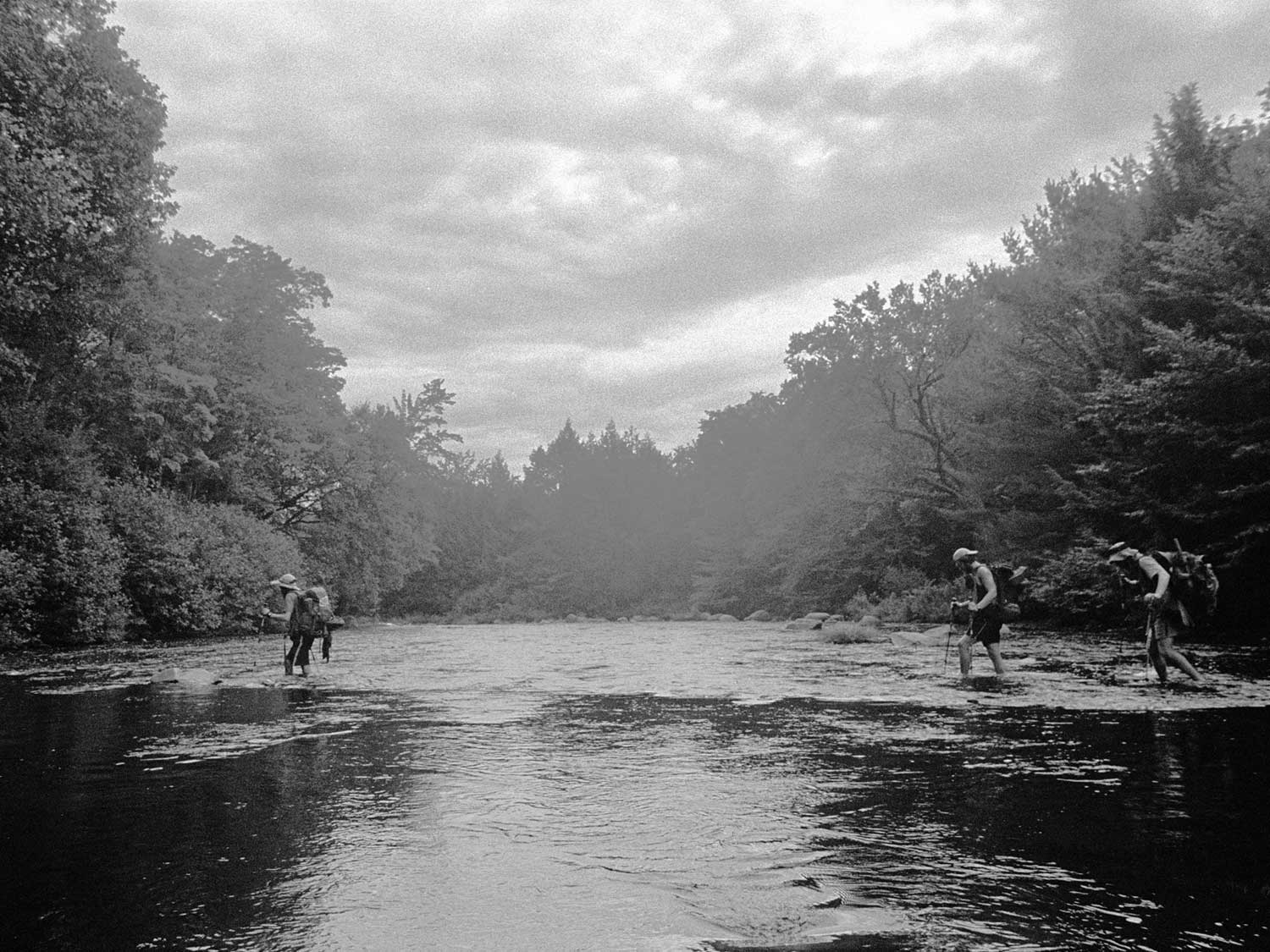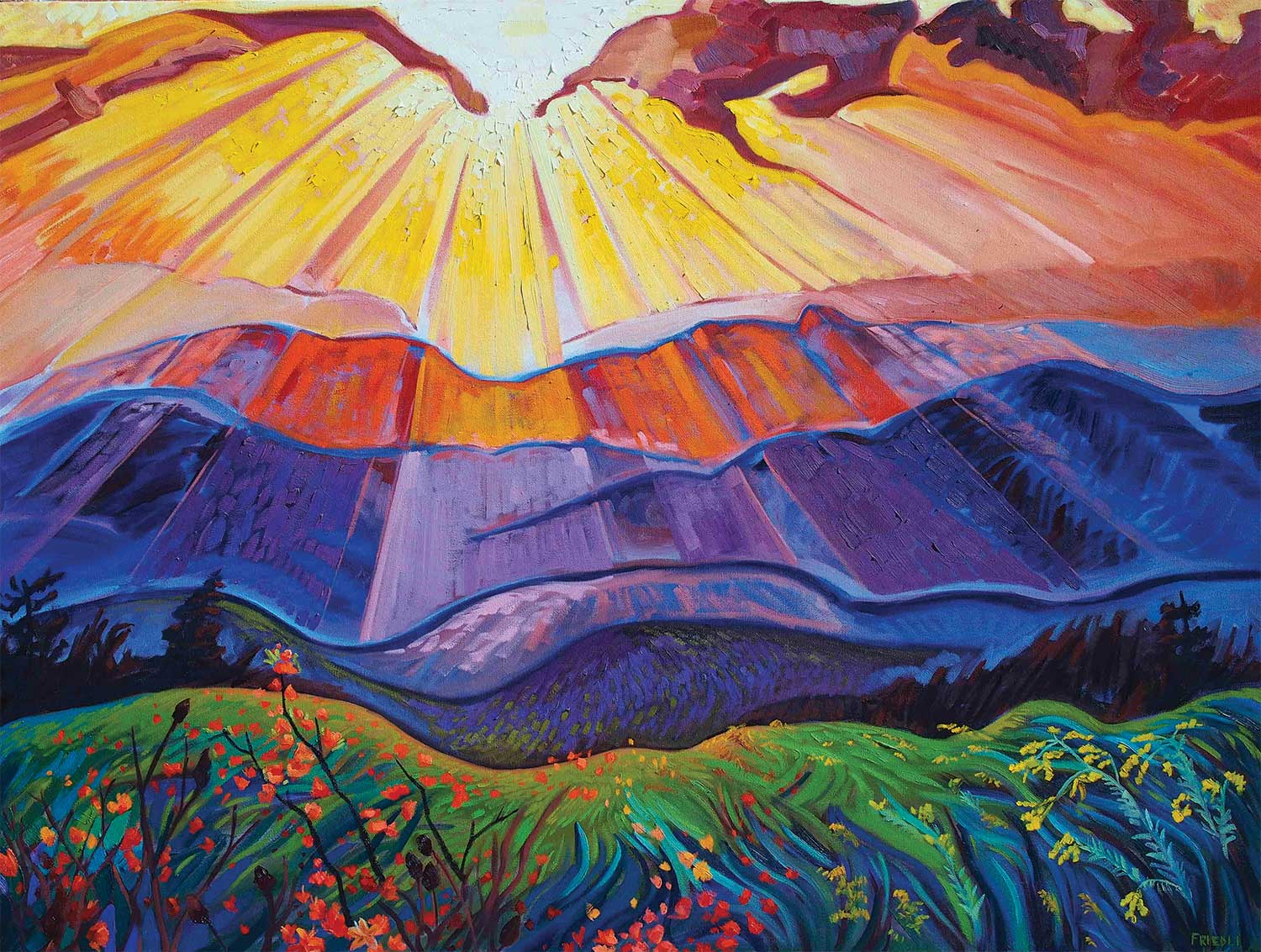
Oil on Canvass
By Heather Friedli
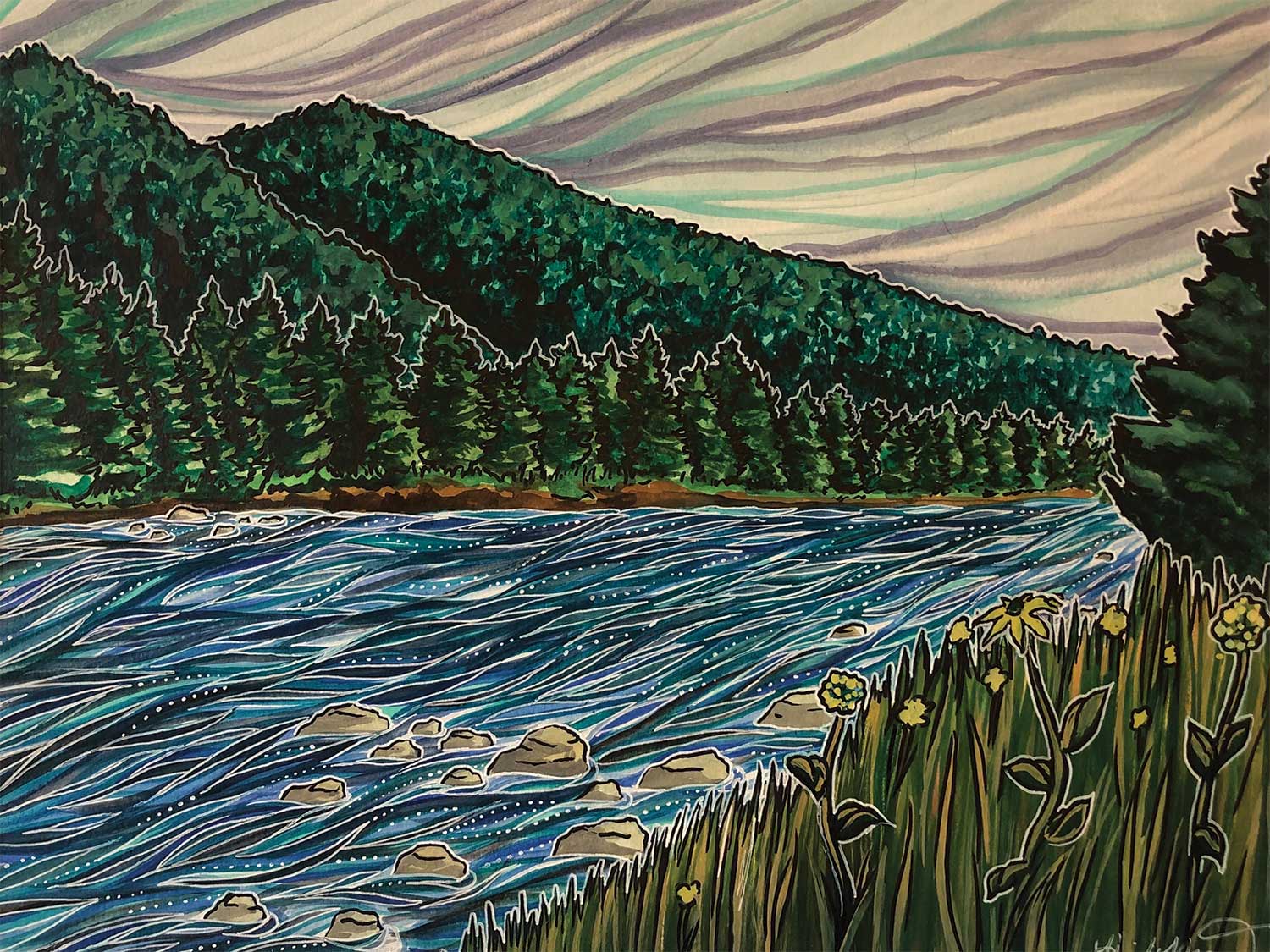
Medium: Watercolor
I grew up in South Carolina and received a BFA in Painting from Winthrop University. I currently reside in Charlotte, North Carolina, where I work for Blue Blaze Brewing, a small craft brewery that is themed around the A.T. and outdoor recreation. After a thru-hike on the Appalachian Trail in 2018, I fell in love with long-distance hiking. I earned my Trail name “Picasso” by carrying watercolors and painting in my sketchbook as I hiked the A.T. Since then, I have hiked Minnesota’s Superior Hiking Trail, South Carolina’s Foothills Trail twice, and am working on completing North Carolina’s Mountains-to-Sea Trail in sections. At home, I am the proud dog mom to an energetic mutt named Junie B. Jones; and during my free time you can find me somewhere in Charlotte’s extensive local trail network with her and my partner, Raphael.
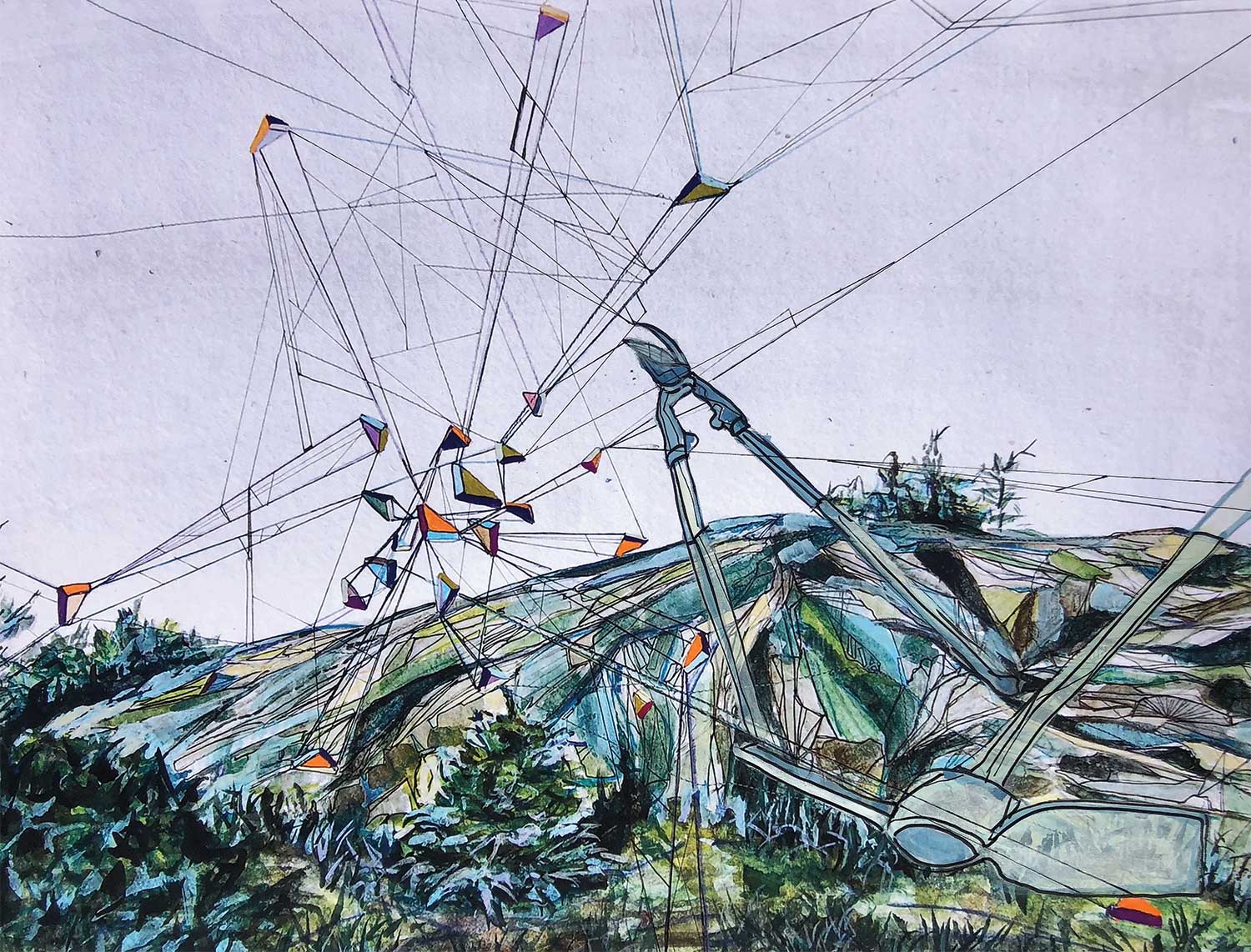
Medium: Watercolor, Ink, and Gouache
“Ridgeline Work” was inspired by the ridgelines of New England and the tools that are used to help maintain the trails. The triangles are representative of the little tracks my shoes used to leave behind. Dirt, mud, and sand get thrown into the air as a small fracturing of the surface I am treading on.
On the Trail I am known as “Early Bird,” a mountain fairy darting among the trees and rocks, doing long days, and letting my wild spirit fly free. I grew up in the hills of Bridgewater, Vermont, nestled among fresh produce and hardwoods. Fascinated by spending time outside and combining passions, I completed a degree in Studio Art and Environmental Studies from Mount Holyoke College, and I am now creating a home in the Roaring Fork Valley of Colorado. In 2018, I thru-hiked the A.T. to complete my Triple Crown and I returned to the Trail in 2019 to hike 100 miles in the New England section.
Medium: Watercolor
For all its natural splendor, the A.T. tests every kind of endurance. As an anxious perfectionist, both my hike and attempt to paint along the entire Trail was a lesson in embracing the imperfect. My motivation stemmed from disappointment in the photos I took of places that overwhelmed me with beauty and emotion. Painting, then and now, allows me to express what I experienced more fully. Watching the first shoots of spring greenery sneaking over the mountains, undulating layers of mountains receding into the distance, vibrant sunsets, so much wildlife, and the vast range of different cultures and communities along the way.
Art, for me, is a means of more perfectly capturing the beautiful scenery and memories of life on the Trail. Through painting, I’m able to distill the feeling of a moment. Being in nature for days on end also lets you shed who you think you have to be, your past, your future, your baggage, and feel a sense of peace and magic of the present that can get lost or forgotten in our constructed world. This is what truly inspires me to create, and it’s my hope that these precious qualities show through my work and help people stay connected to the magic of nature and community wherever we are.


Medium: Watercolor
For all its natural splendor, the A.T. tests every kind of endurance. As an anxious perfectionist, both my hike and attempt to paint along the entire Trail was a lesson in embracing the imperfect. My motivation stemmed from disappointment in the photos I took of places that overwhelmed me with beauty and emotion. Painting, then and now, allows me to express what I experienced more fully. Watching the first shoots of spring greenery sneaking over the mountains, undulating layers of mountains receding into the distance, vibrant sunsets, so much wildlife, and the vast range of different cultures and communities along the way.
Art, for me, is a means of more perfectly capturing the beautiful scenery and memories of life on the Trail. Through painting, I’m able to distill the feeling of a moment. Being in nature for days on end also lets you shed who you think you have to be, your past, your future, your baggage, and feel a sense of peace and magic of the present that can get lost or forgotten in our constructed world. This is what truly inspires me to create, and it’s my hope that these precious qualities show through my work and help people stay connected to the magic of nature and community wherever we are.
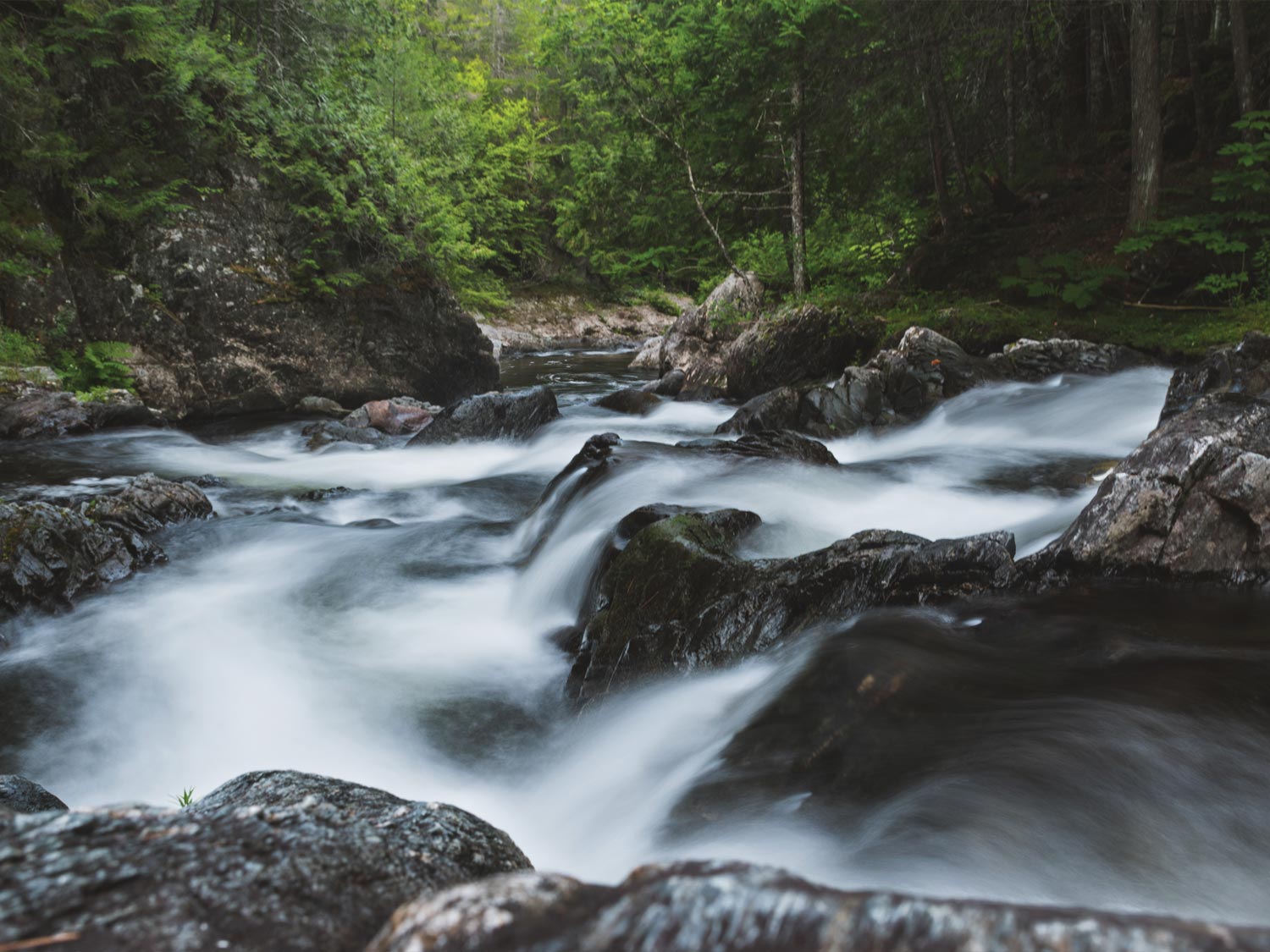
Medium: Photography
The Appalachian Trail was my first photographic project. I wanted to combine my love for creativity with my newly found passion for long-distance backpacking in the great outdoors. About eight months before I set out on my hike, I purchased my first camera, a Nikon D5500 kit camera with 18-105mm F3.5-5.6G lens. Most people are amazed to find out that I captured my A.T. images on an entry-level crop sensor camera. To me, this only reinforces that it is the photographer, not the camera that makes a photograph. Since my A.T. hike, I have traveled as far away as Iceland and the Faroe Islands to explore the outdoors and the beautiful landscapes that inspire me. And while I currently use professional-level Sony Alpha cameras and lenses, I never forget where I started and how true passion can influence one’s photographic work. My hope is to inspire others to live freely and enjoy the natural world as we were meant to.
I am a creative adventurer, and self-taught photographer. In 2017, after attaining a B.S. in Ecology, I chose to leave “society” to thru-hike the Appalachian Trail and immerse myself in the vast wilderness that encompasses it. This journey ignited an intense desire within me to document the most compelling aspects of my travels.

Medium: Mixed Media
I am an artist and educator based in Nashville, Tennessee. I took my first steps on the Trail when I was a teenager. Since then, I developed a close relationship to the A.T., which led to numerous section hikes, a 2014 thru-hike, and working a season as a ridgerunner. With every hike, I make room in my backpack for a sketchbook and art supplies. Inspired by quiet moments at camp, quirky characters, beautiful overlooks, and the grittiness of hiking, my journals are “visual diaries” of life on the Trail.
To tell the story of my thru-hike, I created an installation titled “Appalachian Travelogue” — combining maps, sketches, photos, camping gear, and other items in a kind of “love letter” to the Trail. My work is alternately fictional, autobiographical, or some combination of the two. It is often self-referential, inspired by my own experiences, family tales, or other stories I’ve heard — my own personal folklore of sorts. While these narratives sometimes represent mundane, day-to-day activities, they are animated by poetry and magic.
Everything I create is inspired by the notion of “Americana”: of or relating to the culture and heritage of the United States. Several aspects of this national identity include a reverence for nature, a respect for manual labor and craftsmanship, and an adventurous spirit. In the digital era, we are more alienated from these cultural roots than ever before. My work seeks to re-connect with a simpler way of existence — opening a window through which my viewers can see how life once was, so they can understand who they are today.
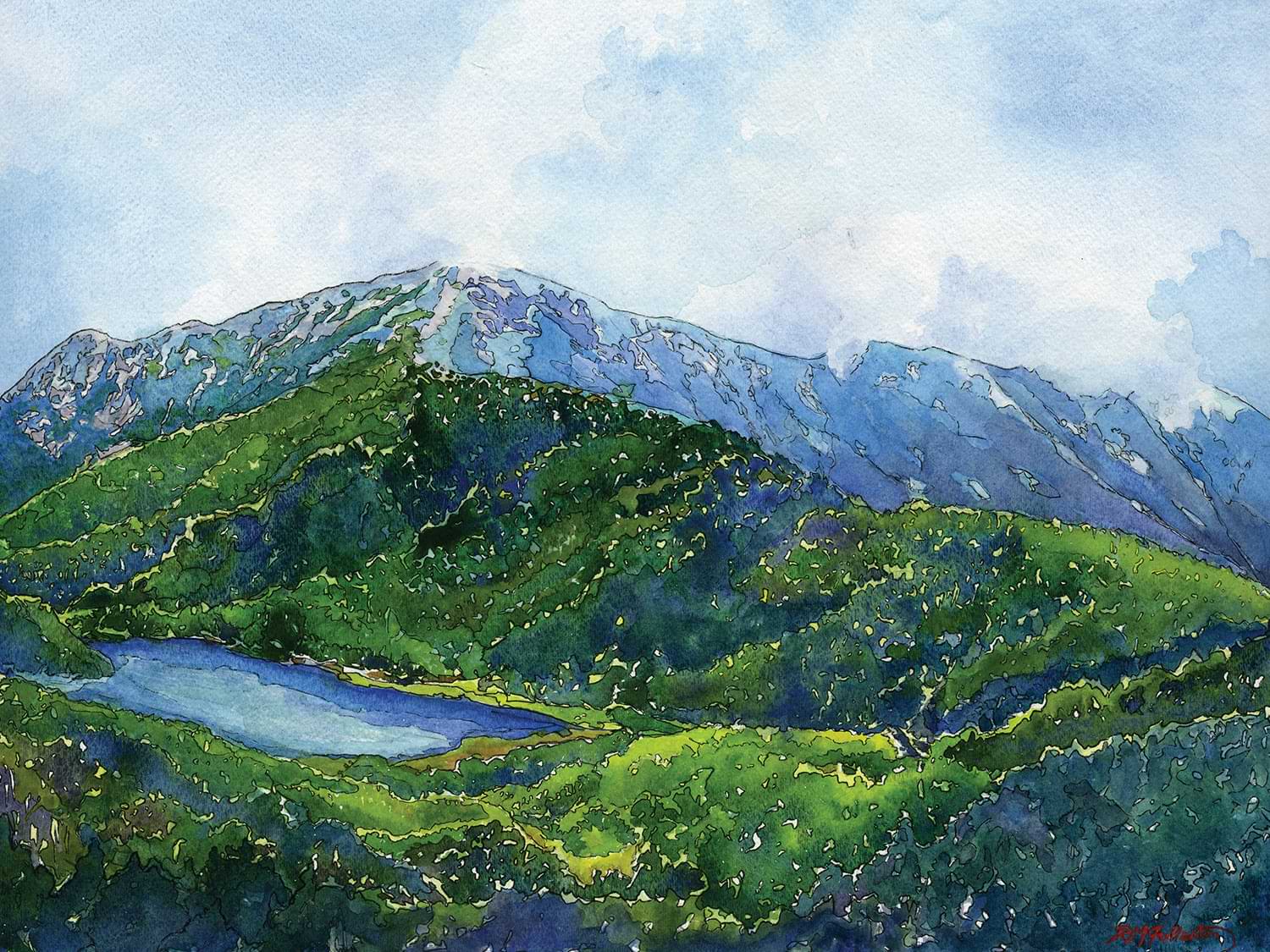
Medium: Watercolor on Ink Paper
I specialize in landscape painting in the realist and impressionist traditions and have been painting in oils and watercolors for over twenty years. I am always trying to capture the atmosphere unique to the White Mountains with its changeable weather, steep trails, and limitless views as a way to promote the fragile beauty of places that deserve conservation.
The Trail is a very tricky but irresistible source of inspiration. You have to work hard to make it to some of the more remote parts of it in the White Mountains. It’s never going to be easy to reach these incredibly beautiful places. In painting them, I’m trying to capture something very elusive about the light, the way the air feels, the hardscrabble roughness of the terrain, the weather, or just the indescribable grandness of the mountains in all their moods and seasons. Accomplishing that is as difficult as the hike itself. You’re always chasing just the right color or line that says everything you felt about being out there. I don’t think there will ever be one painting that captures it all, but I don’t mind at all that I will never run out of subject matter to paint.
When I’m not painting New England’s wild scenery, I am probably hiking, running on a trail, or out on a lake or river in a kayak. The grandeur of alpine summits, the intricacy of intertwining limbs in the deep woods, and sparkle of rushing water through a gorge inspire and inform my painting process. My home is in Bethlehem, New Hampshire, on the edge of the White Mountain National Forest. I hold a BA in Studio Art and Art History from Hartwick College, as well as a MA in Museum Studies from the Harvard Extension School.
Medium: Pencil Sketch, Watercolor
I come from the rocky, moss-covered southwest corner of Pennsylvania, where I spend time outside and on trails as much as I can. In 2019, I hiked southbound on the Trail from Maine to Virginia with a watercolor sketchbook, a travel tin of paints, and a ballpoint pen. It turned into an experience that affected my life and artwork deeply. All of my drawings are inspired by our natural world and spending four months on the A.T. was a privilege that allowed me to concentrate on “seeing” — to be present and observe all kinds of wildlife and landscapes that I’d never seen before.
My paintings and drawings are mostly anchored by their sketches; I try to get down the “bones” of the picture in the moment, and then keep building on top of it. I start a composition in pencil, going over it a couple times to get the drawing right, and then I make it permanent by redrawing in ink, and eventually adding color in the last stage. I really like to draw in pencil and pen because so much of the sketch can be retained. Watercolor paints are great to have on the Trail because they are minimal, low-maintenance, and the medium is very forgiving. I find profound freedom in creating art, and in my non-hiking life I work as a freelance illustrator and printmaker. I can’t wait to return to the Trail in the future and continue learning on the hike.
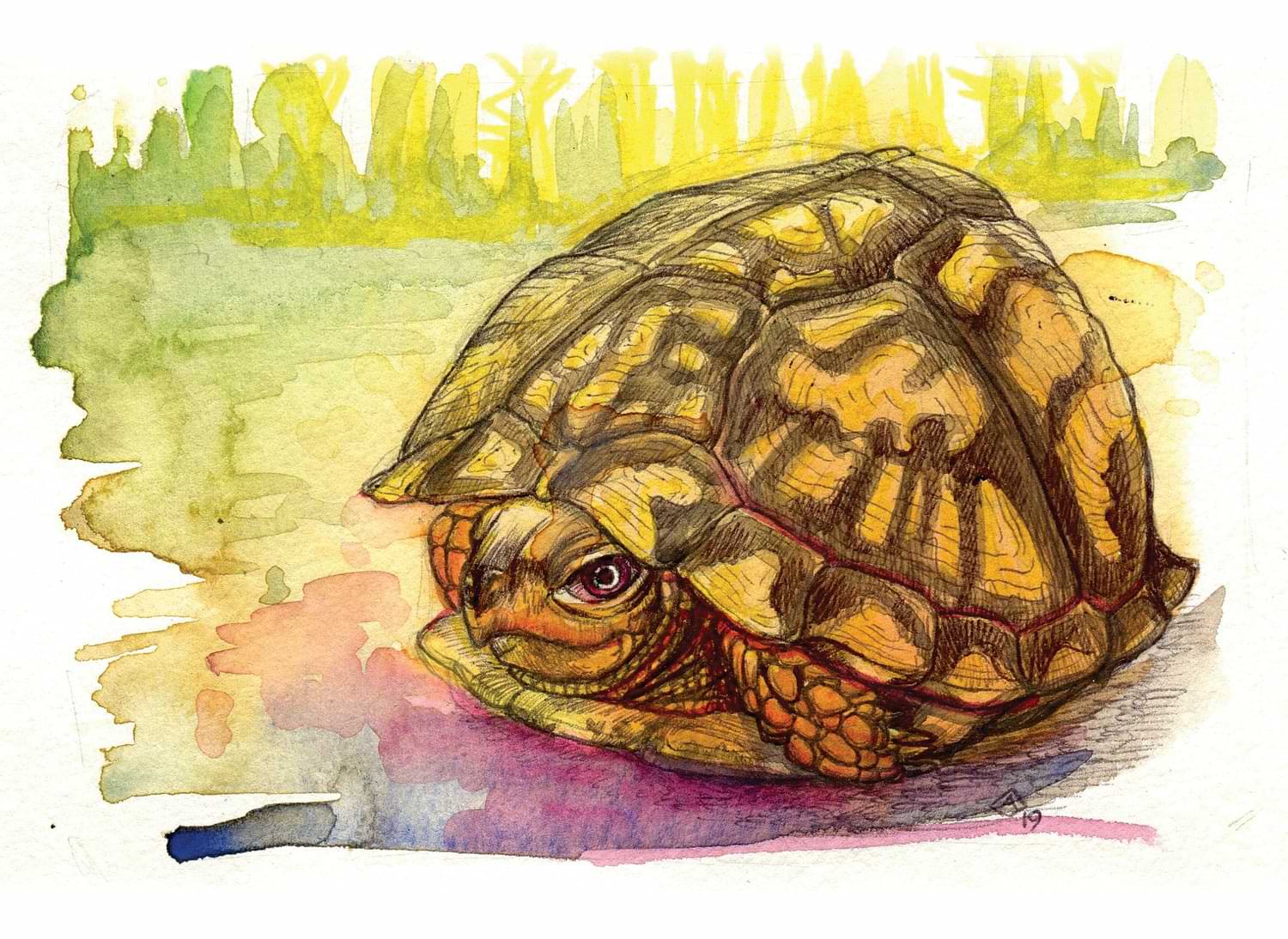

Medium: Pencil Sketch, Watercolor
I come from the rocky, moss-covered southwest corner of Pennsylvania, where I spend time outside and on trails as much as I can. In 2019, I hiked southbound on the Trail from Maine to Virginia with a watercolor sketchbook, a travel tin of paints, and a ballpoint pen. It turned into an experience that affected my life and artwork deeply. All of my drawings are inspired by our natural world and spending four months on the A.T. was a privilege that allowed me to concentrate on “seeing” — to be present and observe all kinds of wildlife and landscapes that I’d never seen before.
My paintings and drawings are mostly anchored by their sketches; I try to get down the “bones” of the picture in the moment, and then keep building on top of it. I start a composition in pencil, going over it a couple times to get the drawing right, and then I make it permanent by redrawing in ink, and eventually adding color in the last stage. I really like to draw in pencil and pen because so much of the sketch can be retained. Watercolor paints are great to have on the Trail because they are minimal, low-maintenance, and the medium is very forgiving. I find profound freedom in creating art, and in my non-hiking life I work as a freelance illustrator and printmaker. I can’t wait to return to the Trail in the future and continue learning on the hike.
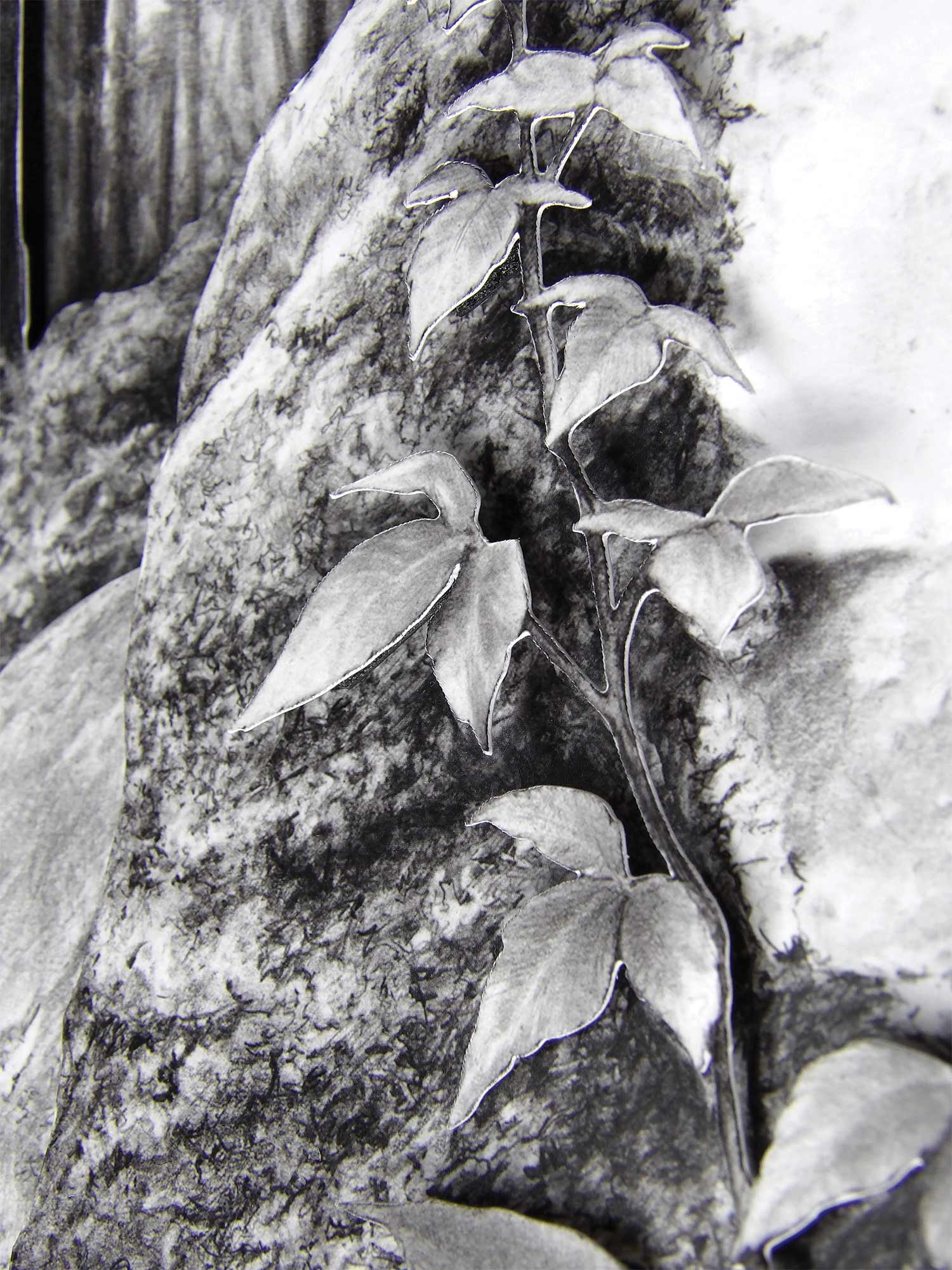
Medium: Pencil Drawings / Shadowbox
@asketchandaprayer
asketchandaprayer.com
preservationthroughart.org
The Trail continued to inspire and push me to experiment even further. I began painstakingly cutting and separating sections of my nature-inspired pencil drawings and layering them on top of one another to give a 3D effect framed inside of a shadowbox. This process allows me to highlight the environment of the Trail in a visually exciting way.
But my creative wanderings didn’t stop there; I soon became involved in an organization called Preserving A Picturesque America (PAPA). One-hundred-fifty years ago, a two-volume book called A Picturesque America was published that showcased artwork and stories of our country’s natural and historical sites. It was the beginning of the conservation movement as it posed the question: what will happen to these beautiful sites in the future? Today, while some areas are within the boundaries and under the National Park System’s protection, some sadly no longer exist. Others are on the brink of being lost forever. PAPA and its members understand the importance of conserving these sites and are actively sending artists out to rediscover the original places and create artwork to be showcased in a new book. Some of the original sites are on the Appalachian Trail, and hikers pass by daily unaware of their significance. Conserving these sites has become of the utmost importance as I attempt to give back to the Trail that has given me such a great deal.

Medium: Pencil Drawings / Shadowbox
@asketchandaprayer
asketchandaprayer.com
preservationthroughart.org
The Trail continued to inspire and push me to experiment even further. I began painstakingly cutting and separating sections of my nature-inspired pencil drawings and layering them on top of one another to give a 3D effect framed inside of a shadowbox. This process allows me to highlight the environment of the Trail in a visually exciting way.
But my creative wanderings didn’t stop there; I soon became involved in an organization called Preserving A Picturesque America (PAPA). One-hundred-fifty years ago, a two-volume book called A Picturesque America was published that showcased artwork and stories of our country’s natural and historical sites. It was the beginning of the conservation movement as it posed the question: what will happen to these beautiful sites in the future? Today, while some areas are within the boundaries and under the National Park System’s protection, some sadly no longer exist. Others are on the brink of being lost forever. PAPA and its members understand the importance of conserving these sites and are actively sending artists out to rediscover the original places and create artwork to be showcased in a new book. Some of the original sites are on the Appalachian Trail, and hikers pass by daily unaware of their significance. Conserving these sites has become of the utmost importance as I attempt to give back to the Trail that has given me such a great deal.
Medium: Acrylic on Wood Panels
My hope is that my paintings can capture not only the landscape but the emotion of being on trails. And to bring my passion for the natural world to people by reminding them to stop and experience their surroundings. For me, backpacking is filled with joy, pain, beauty, perseverance, and a healthy dose of self-reflection. I hope my Trail series captures the feeling of Trail life. And I can’t wait to knock out more miles in 2021.
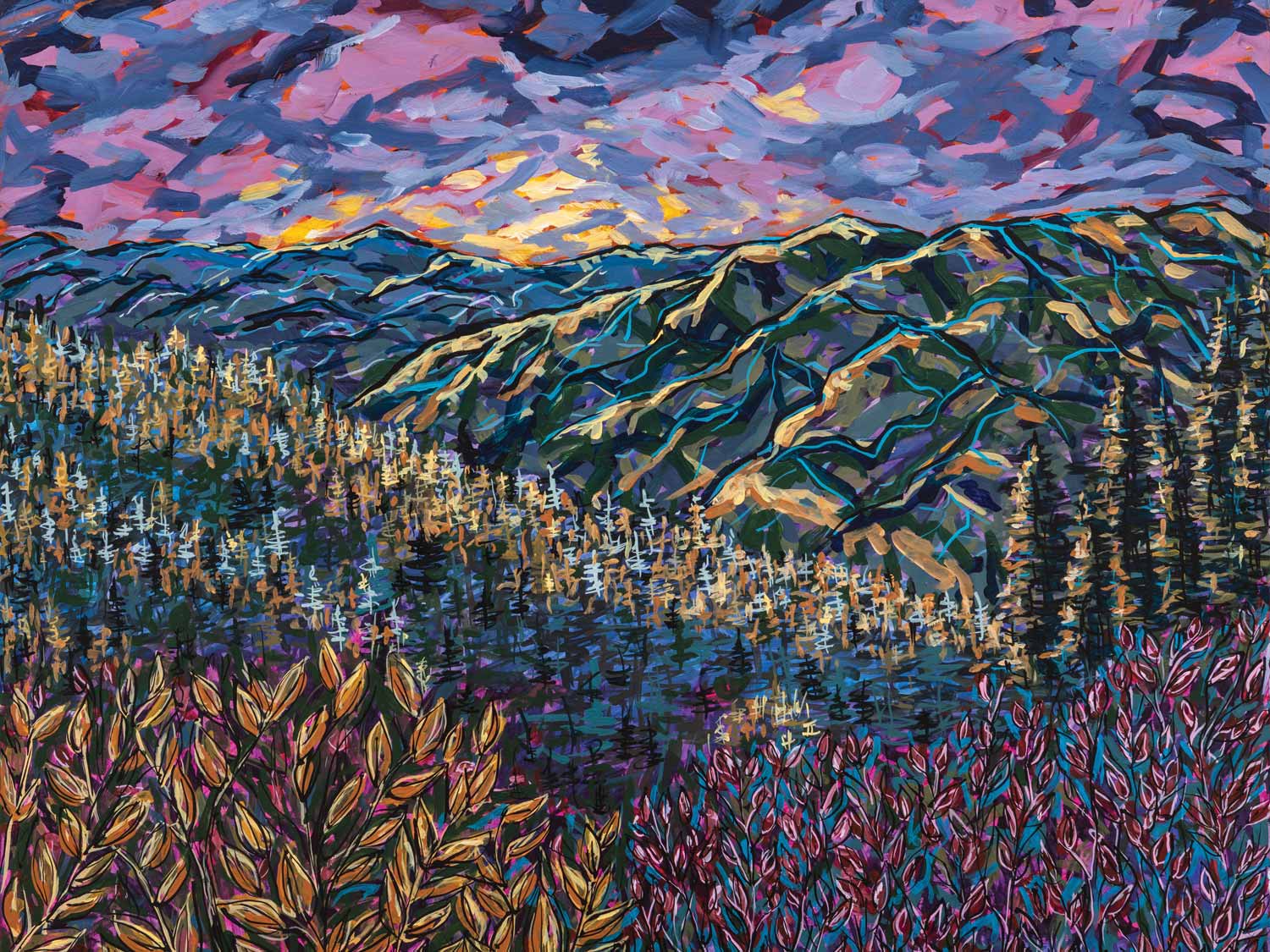
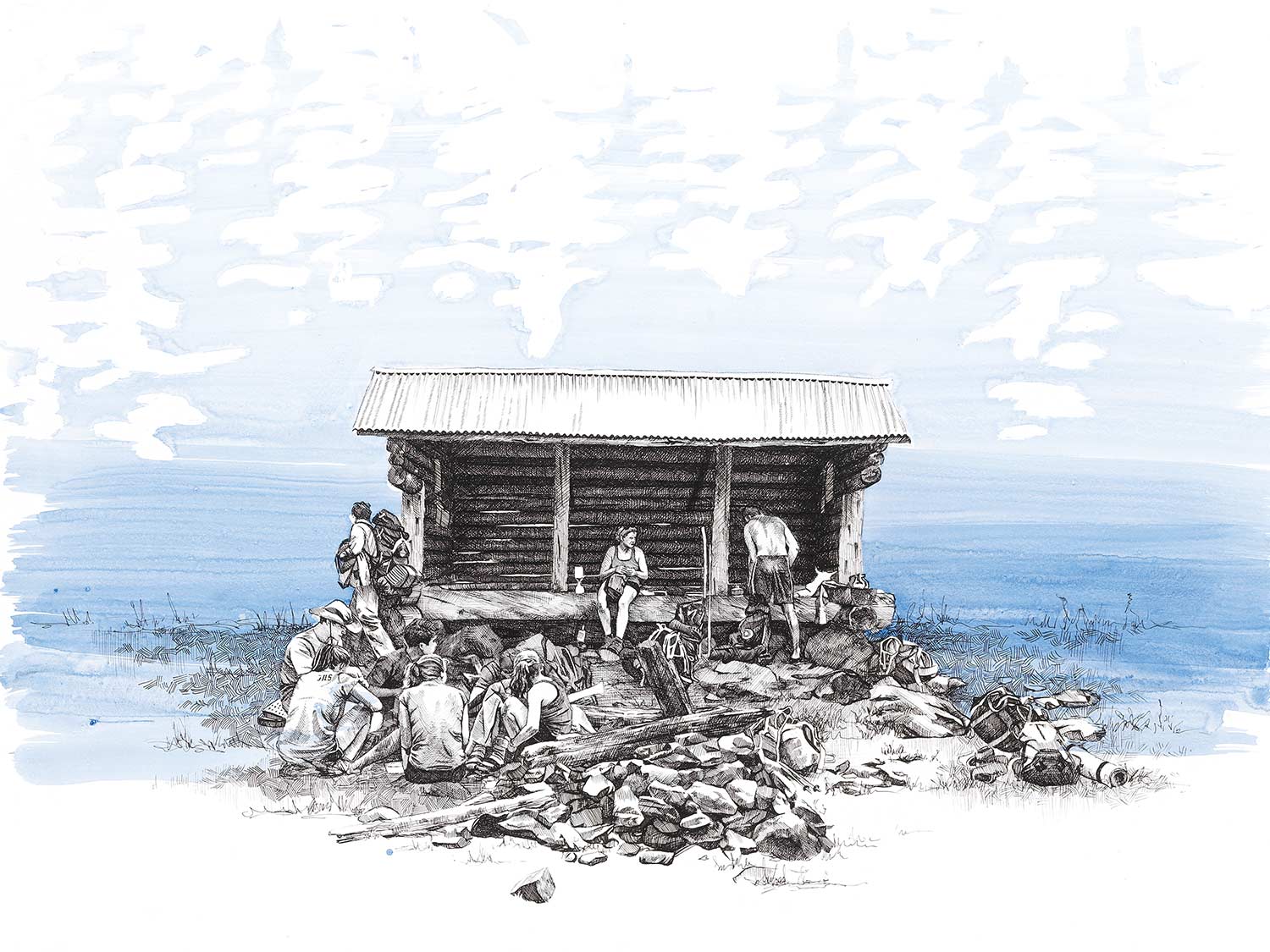
Medium: Pen and Ink over Acrylic Wash
The Trail is a profound teacher. From my experience, I learned to surrender myself to the many things I can’t control — weather, wildlife, and the quite literal ups and downs of the path. The A.T. taught me new lessons in self-sufficiency and the experience of thru-hiking was an empowering reminder of my own strength. But most meaningfully, it helped me to genuinely connect to other people at a time when I felt most disconnected from the world.
The most common question I get with this project is about its title. My best shorthand response is that “hiker trash” is something akin to a beach rat or a ski bum; it’s an affectionate wink paired with a hippies-use-the-back-door flavor. After completing my thru-hike in 2015, I proudly embraced the hiker trash title, and I was eager to interpret my experiences with this awesome community through my favorite language — art. My work is about the process of healing and the ways we seek and find shelter.
I am an illustrator and designer based in Philadelphia, Pennsylvania. My work has been displayed in regional galleries and museums, including the Woodmere Art Museum, Delaware Contemporary, and the Schuylkill Center for Environmental Education. I was recently named a 2021 Wind Fellow by InLiquid and the Dina Wind Foundation and am the 2021 Artist in Residence at the Cedar Point Biological Station, University of Nebraska-Lincoln.
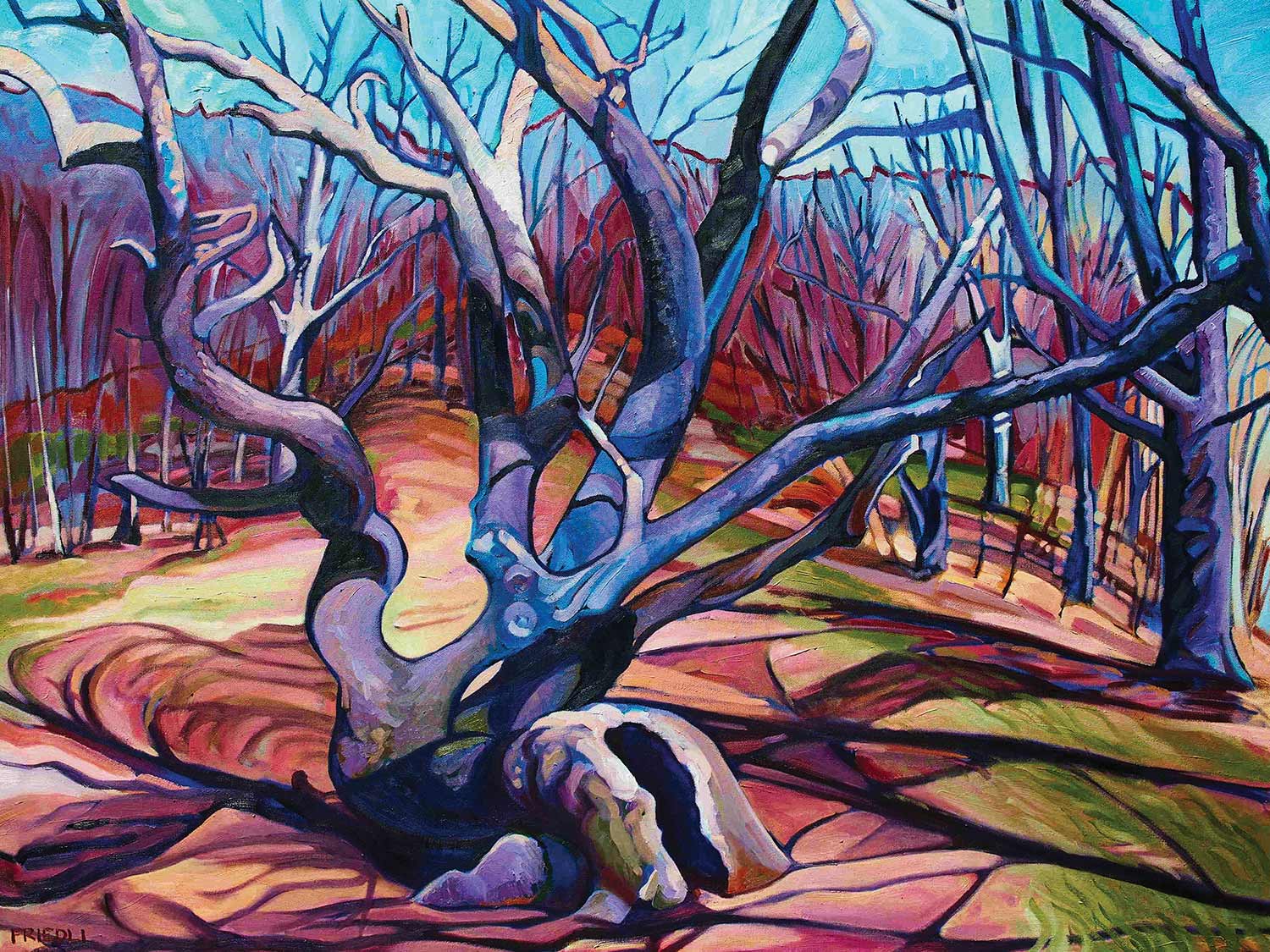
Medium: Oil on Canvas
I use bold brush strokes and brilliant colors to light up scenes of cloudscapes, water, and native flora — often represented in large scale works. My pieces are created in context with my wilderness adventures, and I often bring my paints outdoors to create work that shares with the viewer an immersion in the landscape. I seek the spiritual world through the lens of culture and lived intimacy of place.
I paint with a passion for the land, looking around and internalizing the colors and expressing them onto canvas. Working large scale is not only an expression of what I see but becomes a physical dance with my paintings. The movement and rhythms in these works are my own unique vision of the land around me.
Medium: Hasselblad 500C / Pentax K1000
My inspiration came from the thru-hikers who set out on this epic adventure before me. Ultimately, it was the courage of my fellow hikers who became my muse and turned out to be the greatest inspirations for my work. The grit, sweat, smiles, and blisters were all part of away of life I never wanted to forget. That is when the lightbulb went off: What better way to capture this off-beat culture than to shoot my adventure on some old analog cameras? I had never used film before but thought the grainy nature of the medium would help me capture the gritty nuance of the experience.
By the time I made my way to Springer Mountain, I had already been given a Trail name. I was now “Click.” The name instantly helped me feel grounded. My film cameras — a Hasselblad and Pentax — taught me as much about patience as did the white blazes I was now following. They both helped me to slow down and live life in the moment, one step at a time.
I faced a lot of my own fears and it was my cameras that kept me going especially during the hardest moments. But it was also the community and hikers I met who inspired me to push on and define my work as a photographer. Today I am a photographer, author, husband, and father. I might be less of a dirtbag than I once was, but who knows who I would be today if I hadn’t chosen that 2,000 mile path.
